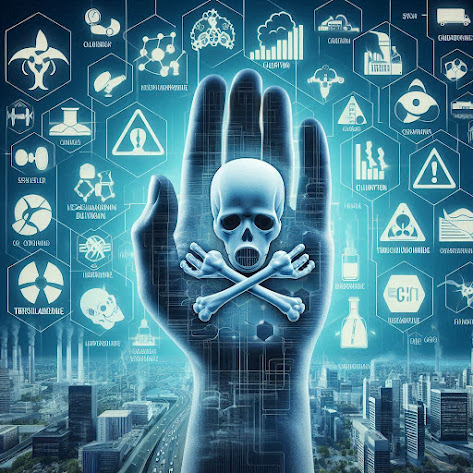Understanding the Health Risks of Hexachlorobutadiene, Chloroform, Carbon Tetrachloride, and Trichlorobenzene
These chemicals are often found in industrial processes, solvents, and water contamination. Understanding their risks helps protect health and advocate for safer practices. Below is an overview of their health impacts with real-world examples and actionable advice.
1. Hexachlorobutadiene (HCBD)
What It Is:
HCBD is a byproduct of chemical manufacturing, particularly in the production of chlorinated hydrocarbons. It is found in industrial waste and can contaminate water and soil.
Health Risks:
- Kidney Damage: Long-term exposure can lead to kidney toxicity and failure.
- Reproductive Issues: Animal studies suggest potential effects on fertility.
- Cancer Risk: HCBD is classified as a possible human carcinogen by the EPA.
Real Example:
In industrial areas, improper disposal of HCBD has caused groundwater contamination. For instance, in Ohio, USA, cleanup efforts are ongoing in areas where HCBD was detected in drinking water, raising public health concerns.
How to Mitigate:
- Ensure proper disposal of industrial waste.
- Use water filtration systems capable of removing chemical contaminants.
2. Chloroform
What It Is:
Chloroform is a colorless, sweet-smelling liquid used in industrial processes and historically as an anesthetic. It forms in water when chlorine reacts with organic matter.
Health Risks:
- Liver and Kidney Damage: Chronic exposure can impair these vital organs.
- Central Nervous System Effects: High exposure may cause dizziness, fatigue, or unconsciousness.
- Carcinogenicity: Prolonged exposure increases cancer risks, particularly liver cancer.
Real Example:
Swimming pools are a source of chloroform exposure due to the reaction of chlorine with organic debris. Competitive swimmers often inhale chloroform from pool water, necessitating better ventilation and maintenance practices.
How to Mitigate:
- Improve ventilation in indoor swimming pools.
- Avoid consuming water with high chloroform concentrations.
3. Carbon Tetrachloride (CCl₄)
What It Is:
Carbon tetrachloride is a solvent once widely used in cleaning agents and fire extinguishers. Its production has decreased due to known health hazards.
Health Risks:
- Liver and Kidney Toxicity: Exposure can cause irreversible damage.
- Central Nervous System Effects: Symptoms include headaches, nausea, and dizziness.
- Carcinogenicity: It is classified as a probable human carcinogen by the IARC.
Real Example:
In the 20th century, improper handling of CCl₄ in dry cleaning facilities led to worker health issues and environmental contamination, prompting stricter regulations.
How to Mitigate:
- Avoid using products containing carbon tetrachloride.
- Advocate for cleanup of contaminated sites.
4. Trichlorobenzene (TCB)
What It Is:
Trichlorobenzene is a chemical used in the production of dyes, herbicides, and as a solvent. It can leach into water from industrial sites.
Health Risks:
- Skin and Eye Irritation: Direct contact causes irritation.
- Liver and Kidney Damage: Prolonged exposure can harm these organs.
- Endocrine Disruption: Animal studies suggest possible hormone interference.
Real Example:
In Germany, spills involving TCB in chemical plants have led to soil and water contamination. Efforts to remediate the sites are costly and challenging.
How to Mitigate:
- Monitor industrial sites for leaks and spills.
- Use alternative, less harmful substances where possible.
For the Benefit of Mankind
Practical Steps:
- Raise Awareness: Educate communities about the risks of these chemicals.
- Promote Safe Practices: Advocate for the use of safer alternatives and strict waste management.
- Support Regulation: Push for enforcement of environmental safety standards.
- Encourage Research: Develop technologies to detect and remove these contaminants effectively.
Takeaway:
While these chemicals have industrial uses, their risks underscore the importance of regulation, safety practices, and public awareness. By understanding these risks, we can reduce exposure, protect ecosystems, and ensure a healthier environment for future generations.
Would you like a detailed plan to reduce chemical exposure in specific settings, such as at home or in the workplace?



.png)

.png)
0 Comments